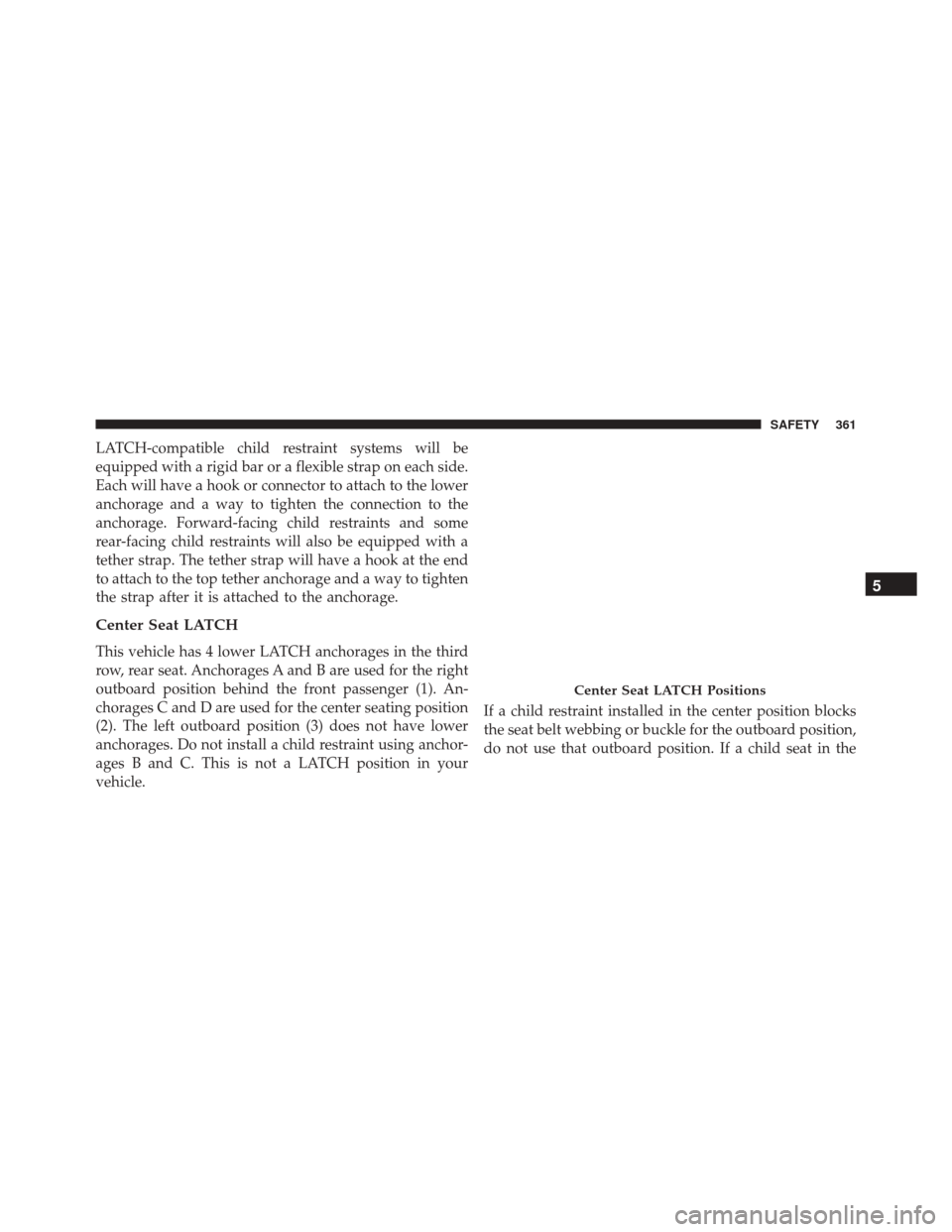Page 47 of 828
•If the vehicle is unlocked by Passive Entry and no door
is opened within 60 seconds, the vehicle will re-lock
and if equipped will arm the security alarm.
• If the child safety locks have been engaged the sliding
side doors can be unlocked from the outside using the
hands free RKE or Passive Entry system.
To Unlock From The Driver’s Side:
With a valid RKE key fob within 3ft (1 m) of the drivers
door handle, grab the drivers front door handle to unlock
the drivers side doors (driver/sliding door) automati-
cally. The interior door panel rocker knob will rotate
when the door is unlocked. NOTE:If “Unlock All Doors 1st Press” is programmed,
all doors and liftgate will unlock when you grab hold of
the driver ’s front door handle. To select between “Unlock
Driver Door 1st Press” and “Unlock All Doors 1st Press,”
refer to “Uconnect Settings” in “Multimedia” for further
information.
Grab The Door Handle To Unlock
3
GETTING TO KNOW YOUR VEHICLE 45
Page 58 of 828
Child Locks
To provide a safer environment for small children riding
in the rear seats, the sliding doors are equipped with a
Child Protection Door Lock system.
NOTE:When the Child Safety Locks have been engaged
the sliding side doors can be unlocked from the outside
using the hands free RKE or Passive Entry system.
To Engage The Child Protection Door Lock
1. Open the sliding side door.
2. On the rear of the sliding door, slide the Child Protection Door Lock control inward (toward the
vehicle) to engage the Child Protection Door Lock.
Overhead Console Buttons
1 — Liftgate
2 — Right Sliding Door
3 — Power Door Power Off
4 — Left Sliding Door 56 GETTING TO KNOW YOUR VEHICLE
Page 363 of 828

LATCH-compatible child restraint systems will be
equipped with a rigid bar or a flexible strap on each side.
Each will have a hook or connector to attach to the lower
anchorage and a way to tighten the connection to the
anchorage. Forward-facing child restraints and some
rear-facing child restraints will also be equipped with a
tether strap. The tether strap will have a hook at the end
to attach to the top tether anchorage and a way to tighten
the strap after it is attached to the anchorage.
Center Seat LATCH
This vehicle has 4 lower LATCH anchorages in the third
row, rear seat. Anchorages A and B are used for the right
outboard position behind the front passenger (1). An-
chorages C and D are used for the center seating position
(2). The left outboard position (3) does not have lower
anchorages. Do not install a child restraint using anchor-
ages B and C. This is not a LATCH position in your
vehicle.If a child restraint installed in the center position blocks
the seat belt webbing or buckle for the outboard position,
do not use that outboard position. If a child seat in the
Center Seat LATCH Positions
5
SAFETY 361
Page 364 of 828

center position blocks the outboard LATCH anchors or
seat belt, do not install a child seat in that outboard
position.
WARNING!
•Use anchorages C and D to install a LATCH-
compatible child restraint in the center seating
position (2). Do not install a LATCH-compatible
child restraint using anchorages B and C. This is
not a LATCH-compatible position in your vehicle.
• Never use the same lower anchorage to attach more
than one child restraint. Please refer to “Installing
The LATCH-Compatible Child Restraint System”
for typical installation instructions.
Always follow the directions of the child restraint
manufacturer when installing your child restraint. Not
all child restraint systems will be installed as described
here.
To install a LATCH-Compatible Child Restraint
If the selected seating position has a Switchable Auto-
matic Locking Retractor (ALR) seat belt, stow the seat
belt, following the instructions below. See the section
“Installing Child Restraints Using the Vehicle Seat Belt”
to check what type of seat belt each seating position has.
1. Loosen the adjusters on the lower straps and on the tether strap of the child seat so that you can more
easily attach the hooks or connectors to the vehicle
anchorages.
2. Place the child seat between the lower anchorages for that seating position. For some second row seats, you
may need to recline the seat and / or raise the head
restraint to get a better fit. If the rear seat can be moved
forward and rearward in the vehicle, you may wish to
move it to its rear-most position to make room for the
child seat. You may also move the front seat forward
to allow more room for the child seat.
362 SAFETY